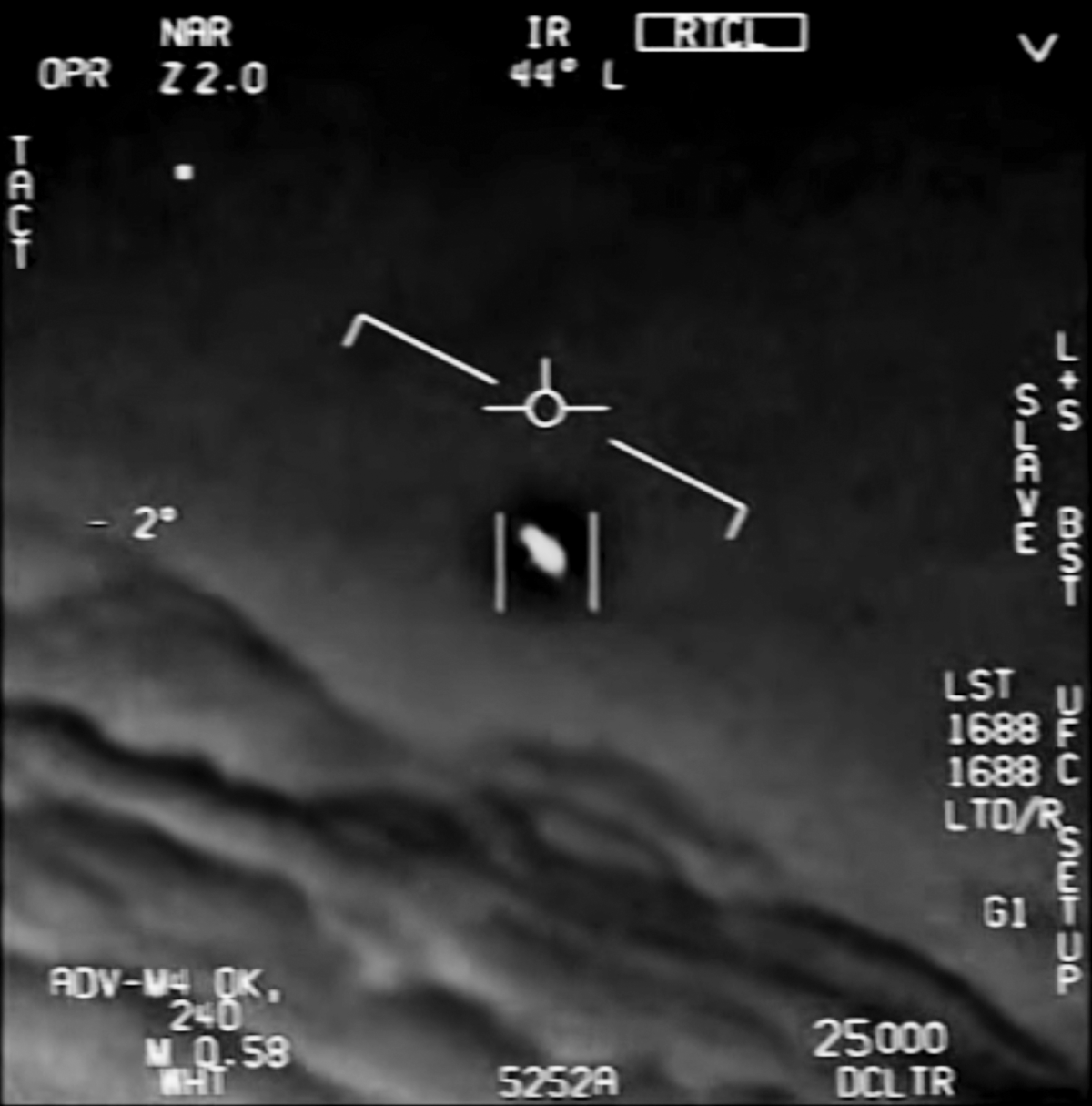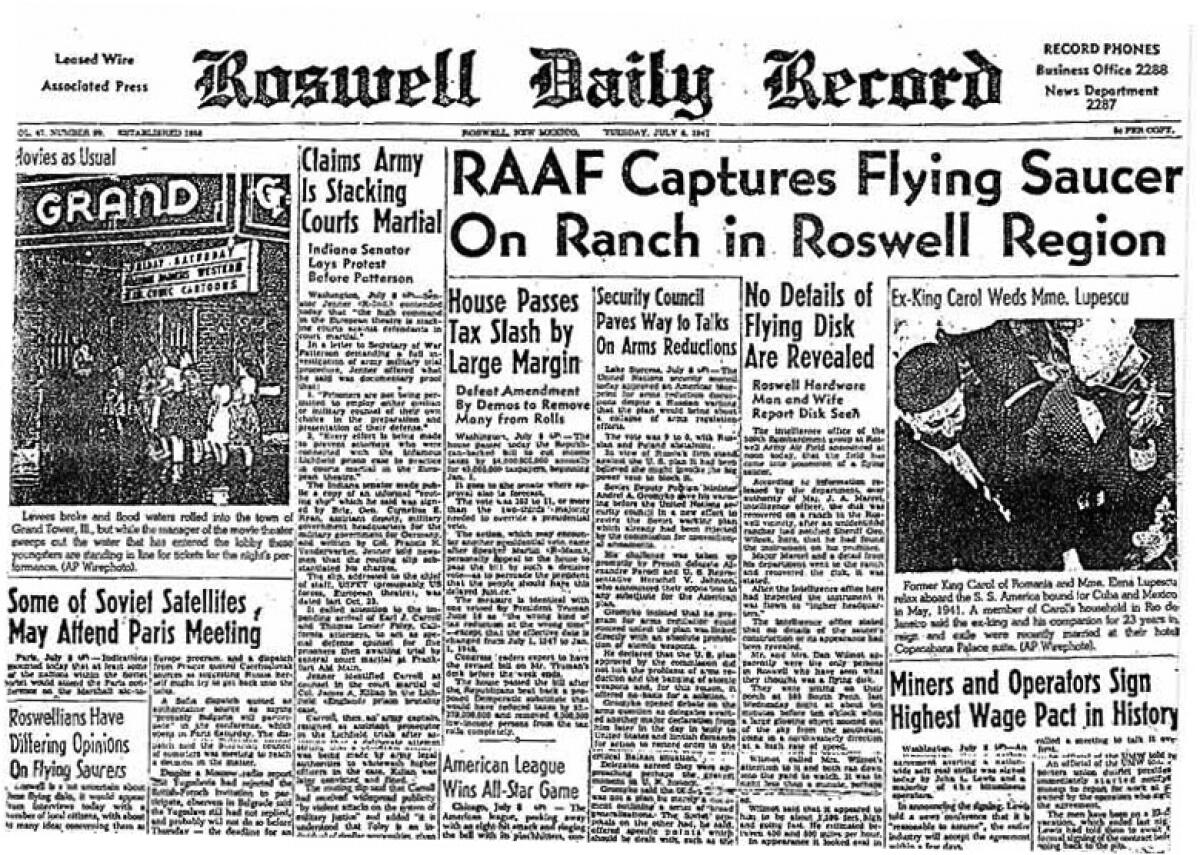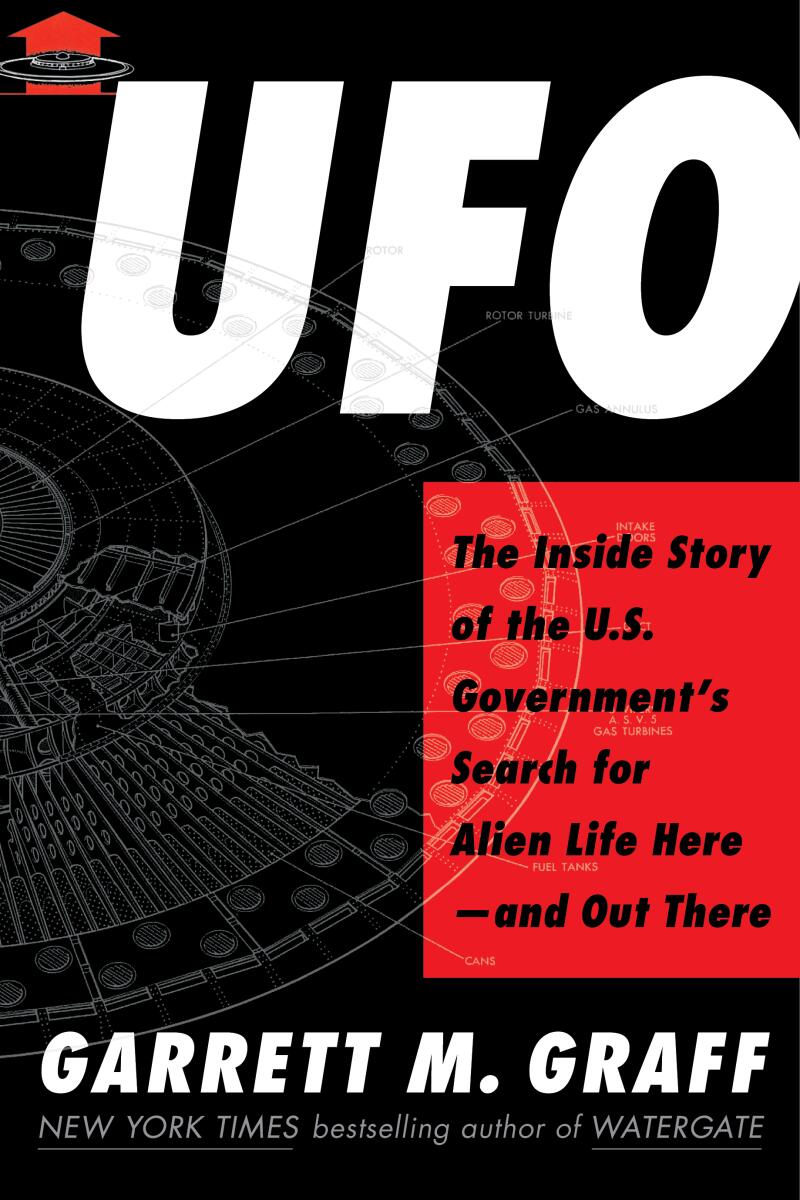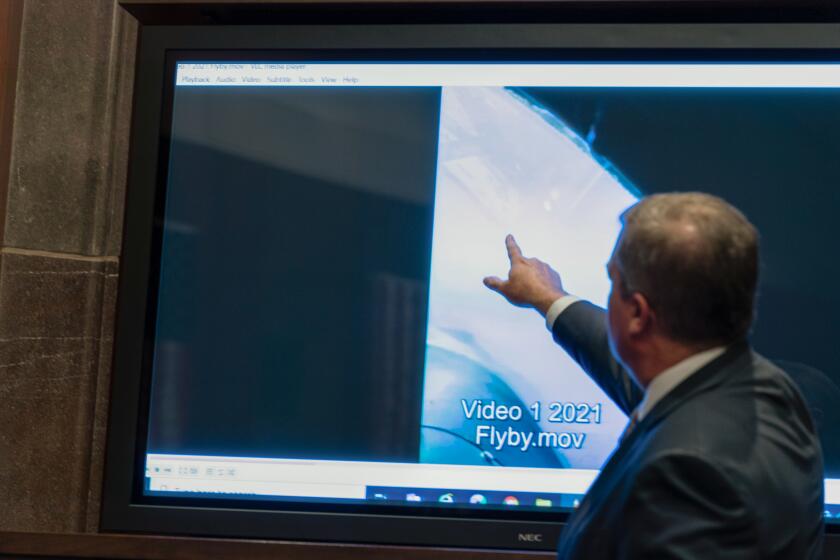The scariest thing about UFOs (itâs not the aliens)

On the Shelf
UFO: The Inside Story of the U.S. Government's Search for Alien Life Here â And Out There
By Garrett Graff
Avid Reader: 544 pages, $33
If you buy books linked on our site, The Times may earn a commission from Bookshop.org, whose fees support independent bookstores.
Garrett M. Graff is a veteran reporter on the U.S. military and security apparatus: His books include 2011âs âThe Threat Matrixâ (on the FBI and the war on terror) and 2017âs âRaven Rockâ (on government doomsday scenarios). His new book, âUFO,â steps into murkier territory. Since the dawn of the Cold War, he finds, the government has gathered information on inexplicable airborne incidents and strategically withheld details from the public. One CIA document from the early â50s noted that the Air Force was keeping an eye on UFO enthusiasts such as Californiaâs Flying Saucer Committee âbecause of its power to touch off mass hysteria and panic.â
Since 2017, as the government has been more public about the phenomenon, the conversation has sobered up somewhat. But any discussion about UFOs still involves engaging with matters of paranoia and wild imaginings. In this conversation, edited for space and clarity, Graff spoke to The Times from his home in Burlington, Vt., about the bookâs inspirations, how UFO conspiracism intersects with Jan. 6 and why the âgiggle factorâ still stands in the way of knowing what truth is out there.
NASAâs new instruction to the U.S. public regarding unidentified anomalous phenomena boils down to a version of the popular security slogan: âIf you see something, say something.â
In the book you mention being interested in UFOs from the time you were in college. What inspired you to research a book about the search for extraterrestrial intelligence?
In 2020 I saw an interview with former CIA director John Brennan, who said something along the lines of, âThereâs some stuff flying around out there that we donât know what it is.â Iâve covered Brennan for years. He has spent his entire career in the upper ranks of the U.S. intelligence community. I think there canât be that many mysteries in John Brennanâs life; if he wants to know the answer to something, he has a $16 billion-a-year intelligence apparatus that can deliver him the answer by the end of the day. If he thought there was something interesting and worthy of further study up there, I thought that was something worth trying to explore in a book.

How did you separate fact from fiction? I imagine you were overwhelmed with stories about abductions and sightings and cattle mutilations.
I tried in general to keep my thread as the U.S. governmentâs debate and discussion around this subject. Thereâs a lot of ufology and paranormal-adjacent stuff that is important to know for a full understanding of the history of the subject. But that fundamentally doesnât impact the governmentâs view of the subject. What I tried to zero in on was 75 years of the U.S. governmentâs involvement.
In that light, the book is also a kind of shadow history of Americansâ distrust in government through much of the 20th century.
Yes. The early stages of the flying saucer age really is the story of the start of the Cold War. Early on, the government doesnât really care whether UFOs are aliens. Once the Air Force figures out that UFOs are not secret Soviet craft being built by Nazi rocket scientists, they lose interest in the subject, even though thereâs probably still a pretty interesting answer out there about what these crafts are. By that point, the subject has taken hold in public popular culture, and then it becomes a story of ever-rising public interest and pop-culture attention, driven by ever darker conspiracy theories about what the government may or may not be hiding.
Naomi Klein was mistaken for Naomi Wolf, a feminist theorist turned conspiracy-monger. She wrote âDoppelganger,â a book about our broken politics, in response
The governmentâs effort to manage the narrative only created more suspicion. You discuss ufology radio hosts who caught the ears of people like Alex Jones.
In many cases those people arenât wrong that the government was lying to them. It was just not the lie that they thought the government was [telling]. But there is a much straighter line from UFO conspiracies to January 6 than I think most Americans would realize.

Could it have been different? Could the military or NASA or CIA have done more to assuage that paranoia? Or is that just part of the American character?
Thereâs certainly an argument that some part of this is the American character. But thereâs also a missed opportunity that runs right up to the present day, to this summerâs UFO hearings on Capitol Hill. The government has still, after 75 years, never put together a real effort to figure out what these UFO sightings actually are. That, to me, was a real puzzle. Yes, some chunk of the sightings is always going to be people being confused, and some chunk is always going to be people looking at Venus. But every single time that anyone has begun to look at this seriously, you end up with some chunks of sightings that are not explainable by known science, astronomy or aviation.
By the way, thatâs not me saying that I think the final answer is aliens visiting from Alpha Centauri. There are numerous fascinating answers â astronomically, atmospherically, meteorologically, within the basic rules of physics â that stop short of an alien visiting planet Earth.
If weâre hoping that more public attention to military encounters with strange aircraft will help us answer questions about extraterrestrial life, we might want to think again.
One other thread of this story is how tenuous those efforts to get that deep understanding are. Carl Sagan was a powerful advocate in the â70s, and NASA benefited from the questions that he was asking. But such efforts seemed to be contingent on one or two lawmakers deciding that it wasnât worth spending the money on.
Thatâs part of what was shocking, looking back on this. Youâre talking about hundreds of thousands of dollars, or a couple of million dollars. Thatâs the windshield budget for the U.S. Army for the month of May.


Garrett M. Graffâs latest book, âUFO,â dives deep into the history, myths and facts behind all those objects in the sky. (Avid Reader Press / Elman Studio)
Does the âgiggle factorâ around UFOs, as you put it in the book, still stand in the way?
The subject has never received more serious and thoughtful coverage and government attention than it has now. Look at the Senate Intelligence Committee, where thereâs bipartisan attention from Marco Rubio and Mark Warner. But at the same time, you can tell when you watch something like the summer UFO hearings in Congress that thereâs still a pretty serious giggle factor.
Is there anything to be done about that?
I think that part of the challenge of the public conversation is that people think that the only answer could be aliens. Whereas when you get into the literature, itâs clear that a meaningful chunk of it â if not the majority of it â is adversarial technology being tested against the United States.
One of the things we know is that the Pentagon has uncovered a heretofore unknown Chinese drone that comes out of the water and transitions to flight. Thatâs a pretty significant understanding of a new adversary capability that has grown directly out of the renewed serious attention since 2017. Itâs not that people are not still reporting UFO sightings or alien abductions. But I donât think that there is as serious a conversation about those sorts of laymanâs interactions with these phenomenons.
Athitakis is a writer in Phoenix and the author of âThe New Midwest.â
More to Read
Sign up for our Book Club newsletter
Get the latest news, events and more from the Los Angeles Times Book Club, and help us get L.A. reading and talking.
You may occasionally receive promotional content from the Los Angeles Times.












